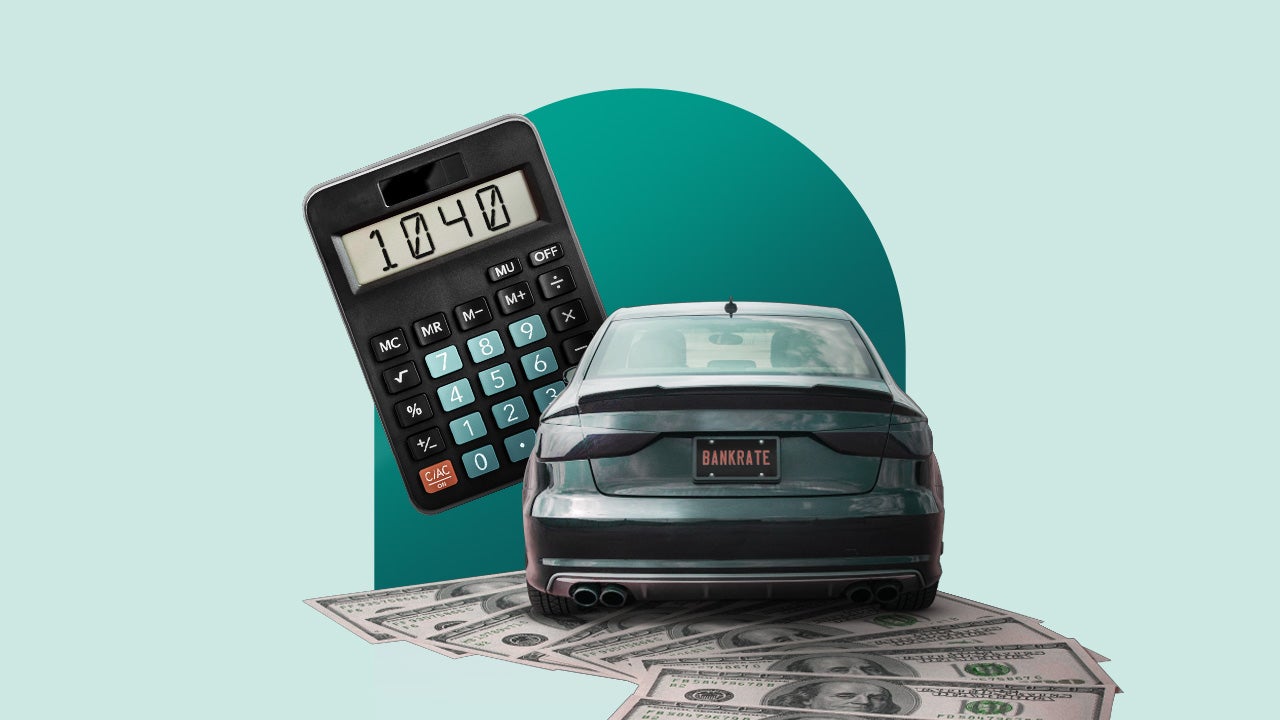Key takeaways
- The new tax deduction allows some borrowers to deduct up to $10,000 in auto loan interest after purchasing a qualifying vehicle.
- To qualify, vehicles must be new, purchased for personal use and have been assembled in the U.S. to qualify.
- Unless you finance an expensive vehicle, your savings from this tax deduction will likely amount to a few hundred dollars.
- Focus on securing a good interest rate and purchasing an affordable car rather than qualifying for modest savings from this tax deduction.
A new federal tax law lets you deduct car loan interest — but the actual savings may leave many drivers disappointed. The deduction is part of the Trump administration’s One Big Beautiful Bill, and a continuation of President Trump’s efforts to encourage Americans to buy American-made goods.
While any relief is welcome in an auto market with high vehicle prices, high interest rates and inflation, this deduction will not apply to many vehicles currently on dealer lots — even some sold under American brands. Those consumers who do qualify may be surprised by how little the deduction actually saves them.
How to qualify for the car loan tax deduction
The new tax benefit on car loan interest allows you to write off up to $10,000 a year in interest paid on an auto loan for a qualifying vehicle. You can claim the deduction whether you use the standard tax deduction or itemize, but only for purchases made from the beginning of 2025 through the end of 2028.
To qualify, you must use a secured auto loan to purchase an eligible vehicle for personal use. Eligible vehicles include most classes of vehicles under 14,000 pounds, including cars, minivans, vans, SUVs, pickup trucks and motorcycles. Recreational and larger vehicles such as ATVs, trailers, campers and RVs do not qualify.
Importantly, whichever vehicle you purchase must undergo final assembly in the United States. You will need to include your car’s VIN on your tax return each year that you claim the deduction.
Check the final assembly point before you buy
You can confirm a vehicle’s location of final assembly using labels attached to the car at the dealership or by using the vehicle identification number (VIN) and the National Highway Traffic Safety Administration (NHTSA)’s VIN Decoder.
The maximum annual deduction is $10,000 for taxpayers with a modified adjusted gross income (MAGI) of up to $100,000 ($200,000 for joint filers). The deduction phases out for taxpayers over that threshold.
Requirements for new auto loan tax deduction
Should you adjust your car choice for the deduction?
While a car loan tax benefit sounds great, most car buyers will only see modest savings from this deduction. If you already have a vehicle in mind, but it doesn’t meet the minimum requirements, it’s probably not worth choosing a different vehicle — or spending more — just to qualify for this tax break.
“This new tax deduction might save you a little money if you’re in the market to buy a car, but it’s not hugely valuable unless you’re planning to take out a large loan on a new car,” says Andrea Coombes, CFP and tax editor at Bankrate.
Coombes gives this example: Assume you take out a $20,000 car loan for five years at 10 percent. Over the life of your loan, you would pay around $5,500 in interest. For four of the five years of your loan, you could deduct the interest you paid that year.
“It’s not nothing, for sure,” Coombes says. “But keep in mind that smaller loans at lower interest rates will result in even less interest paid, and thus an even smaller actual tax break.”
| Estimated savings from the new auto loan tax deduction | |
|---|---|
| Loan principal | $20,000 |
| Total interest paid | $5,500 |
| Potential tax deduction | $242 per year for four years |
| Total saved | Less than $1,000 |
Assuming you’re in the 22 percent tax bracket, that would result in a deduction of $242 for the first year. But since most auto loans are amortized, you would likely save a little less each subsequent year. Your total savings over four years would be less than $1,000.
Bankrate tip
Tax brackets are adjusted annually. Knowing your 2025 tax bracket will help you determine how much the auto loan tax deduction could save you.
The maximum deduction is unrealistic for most buyers
According to Jonathan Smoke, chief economist at Cox Automotive, you would need a car loan of around $112,000 with interest at nine percent or higher for 72 months to receive the full $10,000 deductible interest in one year. In this scenario, the purchase price of your vehicle would be around $130,000.
To put that in perspective, data from Experian shows that in the first quarter of 2025, the average loan amount on a new car purchase was $41,720 with an interest rate of 6.73 percent. That would equate to a deduction of around $500 in the first year of the loan, with a smaller deduction each year after.
| Average auto loan | Auto loan qualifying for the maximum deduction | |
|---|---|---|
| Principal | $41,720 | $112,000 |
| Interest rate | 6.73% | 9% |
| Loan term | 72 months | 72 months |
| Monthly payment | $706 | $752 |
| Total interest paid | $9,104 | $12,426 |
Note that, even in this example, your total interest paid on a $112,000 auto loan will be just under $12,500 for the full six-year term. You will still be far under the annual deduction of $10,000 — limiting your actual savings. You will can benefit from the tax credit, but don’t expect your tax burden to be reduced substantially.
If you are already planning to buy a new car and the model you want qualifies, then this tax deduction will be a nice bonus for you come tax season. You may even be able to amplify it by pairing it with the EV tax credit before that goes away. But your savings may not be large enough to justify buying a new or more expensive vehicle just to qualify for the deduction, especially if it will strain your finances.
Choose a car based on affordability, regardless of the tax deduction
You could chase the new tax deduction by purchasing a more expensive vehicle. Exotic brands like Ferrari, Bentley, Porsche or Mercedes-Benz are most likely to qualify for the maximum deduction — but a more expensive vehicle often costs more to drive.
“When choosing a new car, don’t forget that the make and model you select will directly impact your insurance costs,” says Jessa Claeys, insurance editor for Bankrate. Vehicles with higher MSRPs, more advanced technology or more specialized maintenance needs are usually more expensive to insure.
“When you add that to today’s elevated vehicle prices and interest rates, you could end up spending a sizable portion of your income on a car, even if you qualify for a tax deduction,” Claeys warns. It’s also unlikely that your deduction will fully offset these higher costs.
A longer loan term could reduce your monthly payments, but those smaller monthly payments could mean paying thousands more in interest to finance your vehicle, putting you at risk of an upside-down car loan.
How to save the most on your next car purchase
The best way to save money on your next car purchase is boring but effective: research and plan before hitting the dealership.
- Set a budget for your vehicle. Review your monthly budget and determine what size down payment and monthly payment you can afford. Sources like Edmunds or Kelley Blue Book can help you determine maintenance, fuel and insurance costs.
- Check your credit scores. Your auto loan interest rate is directly tied to your credit scores. In general, high scores will qualify for lower rates, and it will be difficult to qualify for a new loan if you have bad credit.
- Arrange your financing. Research interest rates, qualification requirements and customer reviews for lenders you’re interested in. Once you narrow down your options, apply for preapproval.
- Choose your vehicle. Compare prices at different dealerships and negotiate your out-the-door price. Review your auto loan agreement and check for unnecessary fees, upgrades or services.
- Pay off your loan. If you don’t have a prepayment penalty on your loan, and you can afford it, there are ways to pay off your auto loan faster to save on interest. Or, if your credit score increases, then you can refinance your auto loan at a lower rate.
Bottom line
The Big Beautiful Bill’s car loan deduction might put a little cash back in your pocket — but it’s not worth breaking your budget or compromising on the car that fits your life. If your ideal vehicle doesn’t qualify, focus on smart buying moves that offer bigger, longer-lasting savings. The best financial win is driving a car you can truly afford and feel good about.
Why we ask for feedback
Your feedback helps us improve our content and services. It takes less than a minute to
complete.
Your responses are anonymous and will only be used for improving our website.
Help us improve our content
Read the full article here
















